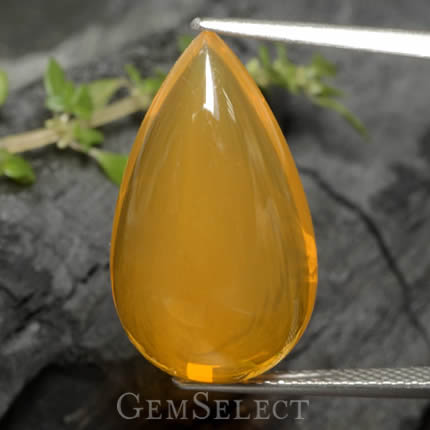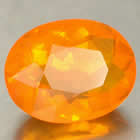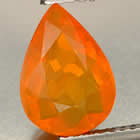The Fire Opal of Mexico

Introduction
The Fire Opal of Mexico is a vibrant gemstone famous for its fiery hues, spanning from bright oranges to deep reds. With exceptional clarity and brilliance, this Mexican fire opal stands out as one of the most striking opal varieties worldwide. It forms mainly in Mexico's volcanic regions, amid natural deposits. Unlike typical opals prized for their play-of-color, fire opals shine due to their vivid, translucent to transparent shades that often mimic flames.
For in-depth knowledge on this gem, explore our guide to fire opal gemstones.
Unique Characteristics
Opals come with certain traits that aren't exactly perfect - like softness, a risk of dehydrating and cracking, physical fragility, and sensitivity to heat and chemicals. They're among the most delicate gems people wear regularly. But hey, despite these quirks, they stay hugely popular thanks to their one-of-a-kind colors.

Like all opals, Mexican fire opal is amorphous hydrous silicon dioxide. That means it lacks a defined crystal structure and holds water - usually 3 to 10 percent - making it essentially a hardened gel. Fire opal has some traits that set it apart from other opals.

Most opals are opaque and cut as cabochons. But fire opal, or Mexican opal, can be transparent to translucent, and top-quality pieces get faceted. If you've never seen one, you might be shocked to discover it's an opal.
To learn more about opals in general, check out our comprehensive opal gemstone information page.
Historical Significance
The classic precious opal, with its shifting colors, has been treasured since ancient Roman days. In the Middle Ages, it was seen as extra lucky for showing hues from various gems. Not every culture agreed, though - a famous Russian belief links precious opal to the evil eye.
Lately, interest has surged in the lesser-known Mexican fire opal. It's valued not for color play but for its bold body color, which might be white, yellow, orange, or red.
Color Variations and Value

Mexican fire opal offers a broad color spectrum, sometimes with multiple shades in one stone. Sunny yellows are prized, but deeper oranges and orange-reds fetch even higher value.
Mining Locations
Fire opal ties closely to Mexico, mined in states like Queretaro, Hidalgo, Guerrero, Michoacan, Julisio, Chihuahua, and San Luis Potosi. Queretaro's key mines, found in 1835, still operate. Tiny amounts also come from Oregon, USA, and British Columbia, Canada.

A fresh deposit emerged in northeastern Brazil, yielding golden fire opal akin to hessonite garnet or hyacinth zircon, plus standard reds, oranges, and yellows.
Care Instructions
Given its high water content, fire opal needs shielding from heat and long sun exposure to avoid drying out. Cutters often dry it before shaping to boost stability, reducing delicacy. Still, with a Mohs hardness of 5.5 to 6.5, it suits pendants, earrings, and brooches better than rings.
Discover additional tips in our opal care and maintenance article.
Frequently Asked Questions
What is Mexican fire opal?
Mexican fire opal is a vibrant gemstone known for its fiery orange to red hues, formed in volcanic regions and celebrated for its clarity and brilliance.
How does fire opal differ from other opals?
Unlike typical opals with play-of-color, fire opal is prized for its vivid body color and can be transparent to translucent, often faceted in high grades.
Where is fire opal primarily mined?
It's mainly mined in Mexican states like Queretaro and Hidalgo, with smaller finds in the USA, Canada, and recently Brazil.
How should I care for fire opal jewelry?
Protect it from heat, direct light, and impacts; it's best for pieces like pendants or earrings due to its relative softness.
Why are opals considered delicate?
They can dehydrate, crack, and are sensitive to heat and chemicals, but their unique colors keep them popular.

